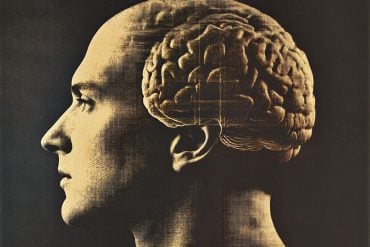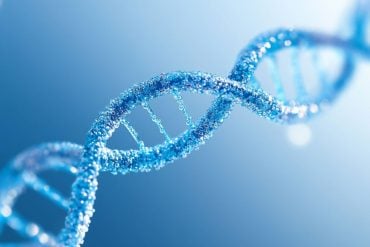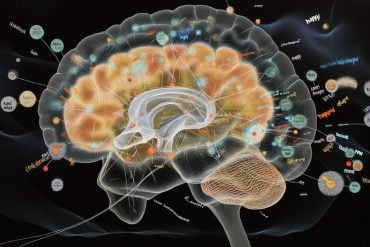Summary: A study uncovers a bizarre trait in hairworms, a type of parasitic worm known for manipulating their host’s behavior. The research found hairworms lacking about 30% of the expected genes, mainly responsible for developing cilia.
Cilia, hair-like structures, are present in cells across all known animal species. This missing genetic information adds to the strangeness of hairworms and poses new questions about their evolution.
Key Facts:
- Hairworms are parasitic worms that are missing about 30% of the expected genes, specifically those responsible for developing cilia.
- The research was led by Tauana Cunha of Chicago’s Field Museum, in collaboration with Harvard University and the University of Copenhagen.
- Both freshwater and marine hairworm species were found to lack these genes, indicating an evolutionary change that happened in their common ancestor.
Source: Field Museum
In a world full of bizarre animals, hairworms are some of the strangest: parasitic worms that manipulate the behavior of their hosts in what’s sometimes called “mind control.”
A new study in the journal Current Biology reveals another strange trait shared by different hairworm species: they’re missing about 30% of the genes that researchers expected them to have.

What’s more, the missing genes are responsible for the development of cilia, the hair-like structures present in at least some of the cells of every other animal known.
Hairworms are found all over the world, and they look like skinny strands of spaghetti, a couple inches long. Their simple bodies hint at their parasitic lifestyle– they have no excretory, respiratory, or circulatory systems, and they spend almost their entire lives inside the bodies of other animals.
“One of the coolest things, maybe the thing that they are most known for, is that they can affect the behavior of their hosts and make them do things that they wouldn’t do otherwise,” says Tauana Cunha, a postdoctoral researcher at Chicago’s Field Museum and lead author of the study done in collaboration with Harvard University and the University of Copenhagen.
There are a few hundred species of freshwater hairworms. Their eggs hatch in water, and the hairworm larvae get eaten by tiny water-dwelling predators like mayfly larvae, which in turn get eaten by bigger, land-dwelling predators like crickets.
After growing into adulthood inside of their new hosts’ bodies, the hairworms manipulate the hosts’ behavior, causing them to jump into water. There, the worms swim out of their hosts’ butts and seek out mates, knotting themselves together, to begin the cycle anew.
(There are also five species of hairworms that live in marine environments and parasitize water-dwelling creatures like lobsters, but it’s not clear if those ones also have host manipulation capabilities– there’s no pressure for the worms to get back to the water, since the hosts already live there.)
As strange as hairworms’ behavior is, Cunha’s research interest in the animals has more to do with their DNA. “We set out to sequence their genomes, because nothing like them has ever been sequenced before at that level,” she says of the study conducted with her co-authors Bruno de Medeiros, Arianna Lord, Martin Sørensen, and Gonzalo Giribet.
“The goal was to produce those genomes and eventually use them to understand the evolutionary relationships between hairworms and other kinds of animals.”
She and her colleagues took DNA samples from two hairworm species– one freshwater and one saltwater– and sequenced them. But when they compared the hairworms’ genetic codes to those of other animals, they found something striking.
“What we found, which was very surprising, was that both hairworm genomes were missing about 30% of a set of genes that are expected to be present across basically all groups of animals,” says Cunha.
Results like that often make scientists wonder if they’ve made a mistake. But there was a connection between the missing genes in the two worm species.
“The large majority of the missing genes were exactly the same between the two species. This was just implausible by chance,” says Cunha.
By looking at what functions these missing genes are responsible for in other animal groups, Cunha and colleagues showed that they give the instructions for producing cilia.
“Cilia are organelles, small structures at the cellular level, that are basically present across all animals and even more broadly, in protists and some plants and fungi. So they’re present across a large diversity of life on Earth,” says Cunha.
They’re present in many of the cells in the human body: for instance, the tails of sperm cells are cilia, and cells in the retinas of our eyes have cilia too.
Previously, scientists had found that hairworms seemed to be missing cilia where they’d normally be found. Hairworm sperm, for example, do not have tails. But while no one had ever seen a ciliated cell from a hairworm, that wasn’t considered definitive proof that they didn’t have them. It’s hard to prove something with negative evidence.
“Without the genomes, this would require looking at all cells in all life stages in all species,” says Bruno de Medeiros, Curator of Pollinating Insects at the Field Museum and co-author of the paper.
“Based on previous observations, it didn’t seem like hairworms had any cilia, but we didn’t really know for sure,” says Cunha.
“Now with the genomes, we saw that they actually lack the genes that produce cilia in other animals– they don’t have the machinery to make cilia in the first place.”
What’s more, the fact that both the freshwater and marine hairworm species had lost the genes for cilia indicates that this evolutionary change happened in the deep past to the two species’ common ancestor.
“It is likely that the loss happened early on in the evolution of the group, and they just have been carrying on like that,” says Cunha.
The finding opens the door to several new questions. It’s not clear how the lack of cilia have affected hairworms, or if the hairworms’ parasitic behavior could be related to the missing cilia.
“There are plenty of other parasitic organisms that aren’t missing these specific genes, so we cannot say that the genes are missing because of their parasitic lifestyle,” says Cunha.
“But parasitic organisms in general are often missing lots of genes. It’s hypothesized that because parasites are not using certain structures and instead rely on their hosts, they end up losing those structures.”
Hairworms aren’t the only parasites capable of “mind control”– it’s a behavior that’s cropped up in protozoans like the organism responsible for toxoplasmosis, which reduces rodents’ fear of cats, and in the fungus Ophiocordyceps, made famous by the video game and TV show The Last of Us, which manipulates ants into spreading the fungus’s spores.
While these organisms are only distantly related to hairworms, Cunha says that the new study could help scientists find common threads for how this behavior works.
“By doing this comparative analysis across organisms in the future, we might be able to look for similarities. Or maybe these organisms evolved similar behaviors in completely different ways from each other,” says Cunha.
About this genetics research news
Author: Kate Golembiewski
Source: Field Museum
Contact: Kate Golembiewski – Field Museum
Image: The image is credited to Neuroscience News
Original Research: Closed access.
“Rampant loss of universal metazoan genes revealed by a chromosome- level genome assembly of the parasitic Nematomorpha” by Tauana Cunha et al. Current Biology
Abstract
Rampant loss of universal metazoan genes revealed by a chromosome- level genome assembly of the parasitic Nematomorpha
Highlights
- First genomes for the phylum Nematomorpha
- Nematomorph genomes lack ∼30% of universal metazoan genes (BUSCOs)
- Widely conserved genes related to cilium formation have been lost in the phylum
- Chromosomes are largely rearranged compared to ancestral condition in animals
Summary
Parasites may manipulate host behavior to increase the odds of transmission or to reach the proper environment to complete their life cycle.
Members of the phylum Nematomorpha (known as horsehair worms, hairworms, or Gordian worms) are large endoparasites that affect the behavior of their arthropod hosts. In terrestrial hosts, they cause erratic movements toward bodies of water, where the adult worm emerges from the host to find mates for reproduction.
We present a chromosome-level genome assembly for the freshwater Acutogordius australiensis and a draft assembly for one of the few known marine species, Nectonema munidae.
The assemblies span 201 Mbp and 213 Mbp in length (N50: 38 Mbp and 716 Kbp), respectively, and reveal four chromosomes in Acutogordius, which are largely rearranged compared to the inferred ancestral condition in animals.
Both nematomorph genomes have a relatively low number of genes (11,114 and 8,717, respectively) and lack a high proportion (∼30%) of universal single-copy metazoan orthologs (BUSCO genes).
We demonstrate that missing genes are not an artifact of the assembly process, with the majority of missing orthologs being shared by the two independent assemblies. Missing BUSCOs are enriched for Gene Ontology (GO) terms associated with the organization of cilia and cell projections in other animals.
We show that most cilium-related genes conserved across eukaryotes have been lost in Nematomorpha, providing a molecular basis for the suspected absence of ciliary structures in these animals.






